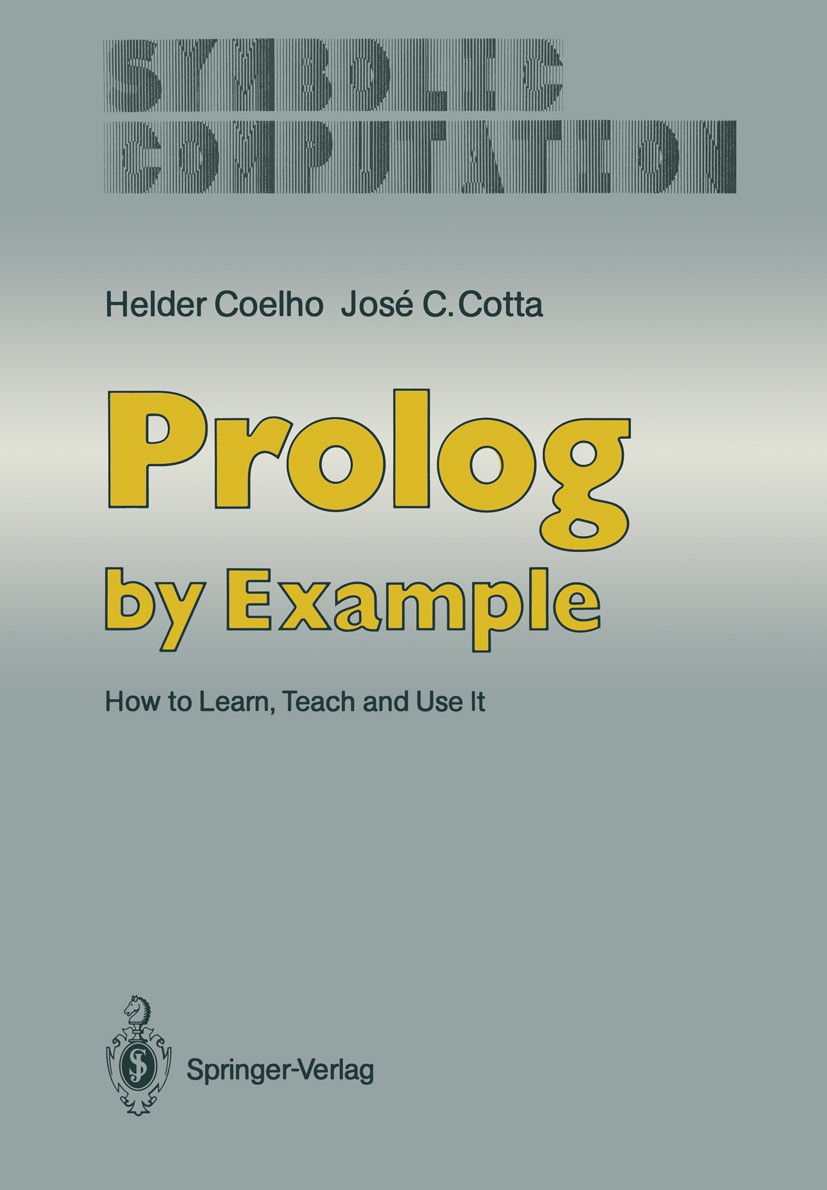| 書目名稱 | Prolog by Example | | 副標(biāo)題 | How to Learn, Teach | | 編輯 | Helder Coelho,José Carlos Cotta | | 視頻video | http://file.papertrans.cn/762/761166/761166.mp4 | | 叢書名稱 | Symbolic Computation | | 圖書封面 |  | | 描述 | Prolog has a declarative style. A predicate definition includes both the input and output parameters, and it allows a programmer to define a desired result without being concerned about the detailed instructions of how it is to be computed. Such a declarative language offers a solution to the software crisis, because it is shorter and more concise, more powerful and understandable than present-day languages. Logic highlights novel aspects of programming, namely using the same program to compute a relation and its inverse, and supporting deductive retrieval of informa- tion. This is a book about using Prolog. Its real point is the examples introduced from Chapter 3 onwards, and so a Prolog programmer does not need to read Chapters 1 and 2, which are oriented more to teachers and to students, respec- tively. The book is recommended for introductory and advanced university courses, where students may need to remember the basics about logic program- ming and Prolog, before starting doing. Chapters 1 and 2 were also kept for the sake of unity of the whole material. In Chapter 1 a teaching strategy is explained based on the key concepts of Pro- log which are novel aspects of programming. | | 出版日期 | Book 1988 | | 關(guān)鍵詞 | Prolog; grammar; implementation; learning; logic; logic programming; modeling; programming; proving; selectio | | 版次 | 1 | | doi | https://doi.org/10.1007/978-3-642-83213-0 | | isbn_softcover | 978-3-642-83215-4 | | isbn_ebook | 978-3-642-83213-0 | | copyright | Springer-Verlag Berlin Heidelberg 1988 |
The information of publication is updating

|
|
 |Archiver|手機(jī)版|小黑屋|
派博傳思國(guó)際
( 京公網(wǎng)安備110108008328)
GMT+8, 2025-10-15 16:23
|Archiver|手機(jī)版|小黑屋|
派博傳思國(guó)際
( 京公網(wǎng)安備110108008328)
GMT+8, 2025-10-15 16:23


